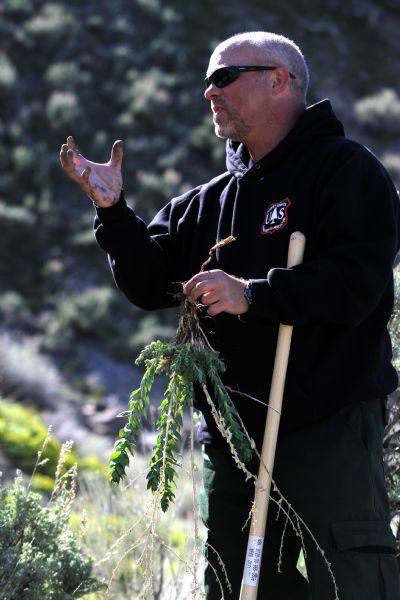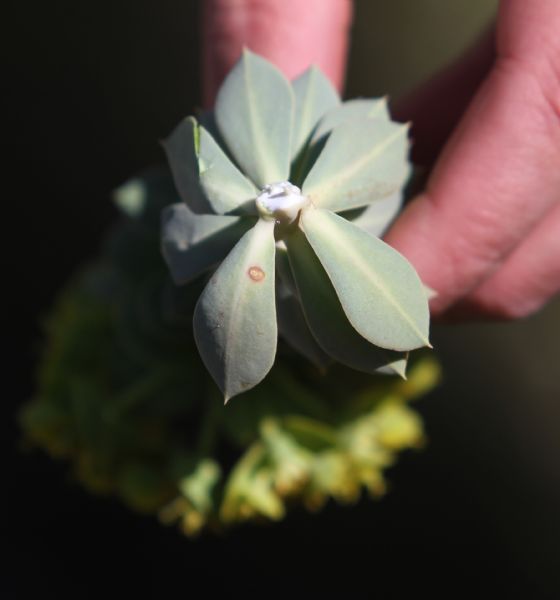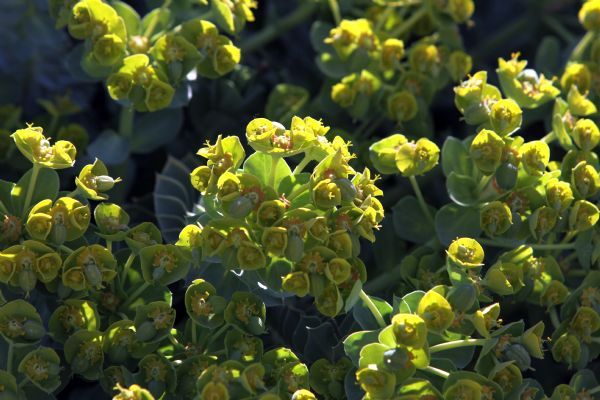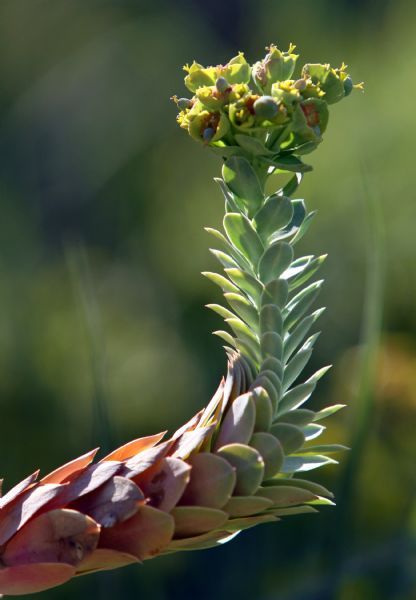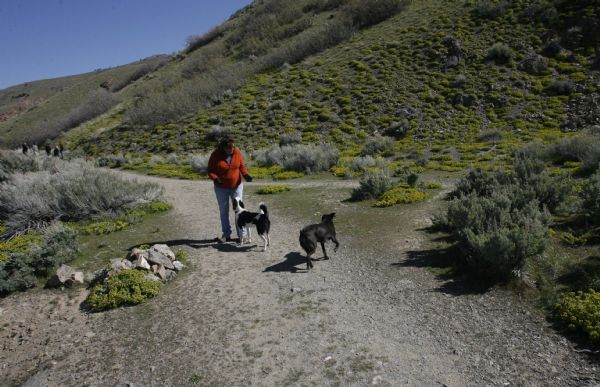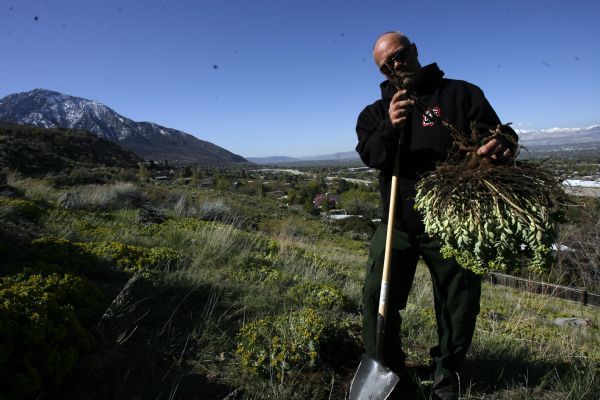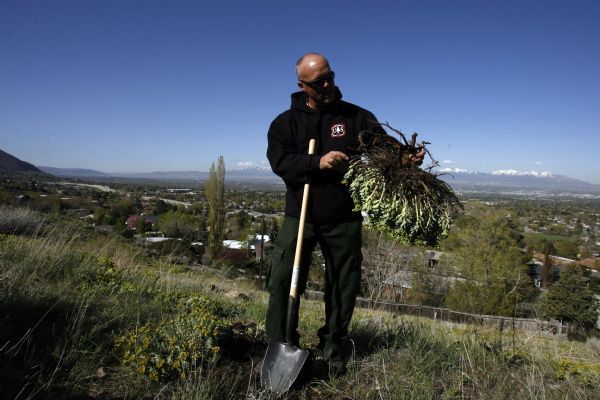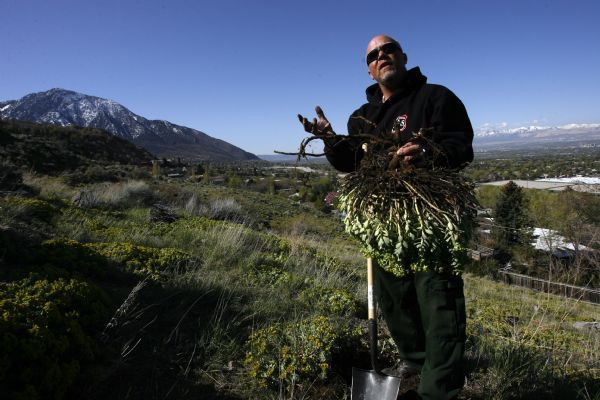This is an archived article that was published on sltrib.com in 2010, and information in the article may be outdated. It is provided only for personal research purposes and may not be reprinted.
Most people walking the trail above the last row of homes in Olympus Cove have no idea that the lush ground cover with the pretty yellow flowers is really an invading menace with toxic properties.
Kimberly Otto-Biebuyck is an exception. She knows the exotic plant all too well.
"We hate the spurge," she says with a look of disdain. "Every year it gets worse and worse. Here and at my home. The stuff is vile."
Otto-Biebuyck lives near Eastwood Elementary close to the Wasatch foothills, and first noticed myrtle spurge taking over her yard and the steep hill behind her house about 10 years ago. That was about when land management agencies also noticed the plant starting to dot the landscape.
"It is a major concern," said Michael Duncan, a botanist with the Uinta-Wasatch-Cache National Forest.
The plant steals water and nutrients that would otherwise nourish native plants, he said. "Once native plants are gone, the native animals and birds that utilize them are also gone."
Introduced in the U.S. as an ornamental plant for landscaping, myrtle spurge is native to the Mediterranean and is accustomed to harsh environments like that of the Wasatch foothills.
It is fond of steep hillsides. The thick carpet it provides may seem beneficial for erosion control, but because it has a single, deep, tap root, the plant provides no feasible soil stability and, in fact, may create more of an issue by pushing out native plants that do help prevent erosion.
"This is speculative, but if there is a large enough infestation and we get a 50-year or 100-year storm, homes downhill could be in danger," Duncan said.
Salt Lake County officials have convinced nurseries to stop selling myrtle spurge, but it is still available outside the county. Whether they've planted it on purpose or not, homeowners quickly recognize its shortcomings.
Myrtle spurge contains a caustic sap that irritates skin and can cause swelling and blisters.
"One year we had some strong rains and the toxins from the spurge leaked through a retaining wall and killed the fish and plants in a pond in our backyard," Otto-Biebuyck said.
Officials from the Forest Service, Salt Lake County and Salt Lake City employ several strategies -- including herbicides and insects -- to contain and eliminate myrtle spurge and other noxious weeds, but they are unlikely to succeed without the assistance of the public.
The Cottonwood Canyons Foundation holds Weed Warrior invasive weed pulls on Thursdays through August. Individuals and groups are encouraged to participate. Salt Lake City Public Utilities also provides opportunities for volunteers to rid the landscape of non-native plants.
Attending a weed pull helps hikers and other visitors to the foothills and mountains learn how to properly identify invasive weeds. It is also a good way to learn the proper times of year to go on picking binges. For example, if people weed myrtle spurge in August, they could be doing more harm than good.
Its seeds are dispersed that time of year and plucking them could help spread the seeds. Not that they need any help; the plant can project its seeds up to 15 feet.
"It is our hope that these projects become self-sustaining," said Vanessa Welsh, a watershed specialist ranger with Salt Lake City. "This is not something we are going to conquer in three hours in May. Some people do some weeding every time they go hiking. They need to know what they are doing."
People can swap invasive weeds from their yards for native plants during the fourth annual "Purge the Spurge" exchange May 15 from 10 a.m. to 3 p.m. at the Salt Lake REI store, 3285 E. 3300 South, in East Millcreek. The event is sponsored by the Bonneville Cooperative Weed Management Area, Salt Lake County Weed Program, Salt Lake Conservation District and the Utah Native Plant Society. The exchange is held in conjunction with a native plant sale. Call the Salt Lake County Weed Program staff at 801-469-2861 for more information.
The Cottonwood Canyons Foundation holds weed pullings every Thursday through August. Visit cottonwoodcanyons.org or call 801-947-8263 for details.
Salt Lake City Public Utilities also sponsors a number of weed pulls and weed tours. Visit slch2o.com or call 801-483-6884.
For a comprehensive list of noxious weeds in Utah and how to eradicate them, visit utahweed.org.





